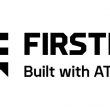Growing pains
Seven years ago, Keiji Tachikawa, then head of Japanese wireless giant NTT DoCoMo, asserted that everything from pets to refrigerators were prime candidates for wireless monitoring and controlling and such communications would consist of the majority of the carrier’s total business in 10 years. That prediction seemed outlandish then, but today, the market for what is known as machine-to-machine, or M2M, communications is growing at a rate of about 20% annually across all application categories, according to vendor estimates.
One of the factors driving this growth is that the business world, and not just historical customers such as major utility and fleet-management companies, is embracing the technology. Though M2M has been around for several years, myriad factors have converged to create a massive market that is expected to one day exceed the penetration of the mobile phone market.
Early M2M deployments were limited to high-end telemetry and SCADA (supervisory control and data acquisition) for pipelines and utilities, often running on expensive private radio or legacy systems. Today, however, wireless networks such as GPRS/EDGE and CDMA 1X RTT/1X EV-DO can offer higher-speed data capabilities with nearly ubiquitous coverage at attractive prices. Consequently, many of the world’s top handset vendors are leveraging the economies of scale found in the mobile phone business to bring M2M modules to market at competitive price points.
“Coverage and cost of data has reached an economically viable inflection point,” said Chris Purpura, senior vice president of marketing for Aeris Communications, a company that can be characterized as a mobile virtual network operator (MVNO) dedicated to M2M. “The first generation was very simple pieces of information sent over a very narrowband pipe, but now we have the equivalent of DSL to the home … out to the mobile device. That is spurring a lot of innovation around added capabilities and people considering M2M when they didn’t before.”
Indeed, wireless communications is touted as a way to monitor everything from light bulbs to parolees. The FocalPoint Group projects that the global M2M market will reach some $250 billion in 2010. Harbor Research says the sales of wireless modules for devices, sensors and machines will grow rapidly from approximately 33 million units this year to about 400 million in 2011.
In the U.S., a host of companies is moving into the M2M space, ranging from application providers to those that supply the back-end support. Mobile operators are beginning to create service plans that are appropriate for M2M while MVNOs such as Aeris and Kore Telematics have established wholesale agreements with operators to buy airtime and offer customized services. Vendors such as Telit and Kyocera Wireless’ M2M module business are releasing newer and cheaper units, which average about $100, capable of fitting into a variety of vertical markets without much adaptation.
‘Holy Grail’ is within reach
Home security, fleet management, vehicle telematics and remote monitoring continue to dominate the market at this point, say M2M players. For instance, the technology is playing a large role in the utility segment as companies continually search for ways to save costs by conserving energy consumption.
“What we’re finding more and more is that there is a need to try and optimize the load in the electricity distribution network by incenting users to not all start their washers and dryers at eight in the morning when everyone else is using electricity,” said Anders Franzén, chief operating officer of Wavecom, which manufactures pre-packaged wireless M2M solutions. “Electricity companies want to offer more attractive pricing during the off-peak usage times. They need a way to measure and bill at the time of consumption.”
Utilities also are looking at smart thermostat applications that will enable them, for instance, to turn down thermostats by one degree over thousands of homes if a blackout is looming because of excess consumption of energy on a very hot day.
M2M also is beginning to have a multi-faceted effect on business processes — not only enabling cost savings but also creating new revenue opportunities. For instance, Aeris customer Genscape physically monitors in real-time some 300 of the country’s most significant power plants and transmission paths to increase the efficiency of electricity markets. But it also found another way to make money by offering that same information to traded markets for natural gas, coal and emissions.
Kore Telematics, which aims to be a one-stop designer/supplier of network services to the M2M market, is working with Arizona Public Service to deploy about 1 million devices that incorporate smart metering systems to replace meter readers. But the company found that the ancillary benefits have outweighed the primary benefits, according to Alex Brisbourne, president and chief operating officer of Kore Telematics. For one, Arizona Public Service can mount meters in tamper-proof boxes 20 feet from of harm’s way, which reduced replacement costs. It also can improve cash flow by being able to present customers with a final bill the minute they move out of a rental unit rather than waiting to dispatch a meter reader.
But the Holy Grail for the M2M industry is the ability to drive deeper into the business world and eventually the consumer market. The sweet spot at this point appears to be those businesses that make and service commoditized products, such as copy machines, printers and medical devices. Because costs have dropped in the M2M market, companies now can afford to monitor assets that are worth $10,000 instead of $1 million, said Steve Pazol, vice president and general manager of nPhase, an M2M solutions provider that was recently purchased by Qualcomm. “That is the big change,” he said
According to Pazol, the goal is to use M2M to establish a differentiated service offering in order to create a deeper relationship with the customer. OEMs, for example, typically are in best position to know how to operate and service their products, but once a product is installed at a customer facility, the OEM has very limited visibility into how that product is being used. Many vendors insist that so-called smart services can change that. Let’s say an air compressor OEM could see the performance of its customers’ systems at all times; it would then know when one of its systems is consuming too much electricity, which is an indication that it needs to be tuned or have a filter replaced.
ABB Robotics, which manufactures robots for automotive companies and other assembly-oriented industries, is using nPhase’s Smart Services M2M solution to reduce robot downtime and provide more cost-effective service by eliminating on-site troubleshooting and coordinating spare parts and field technician dispatch. The result has been a 70% reduction in asset downtime.
Not a home run yet
With all of the excitement over M2M, it will still be a while before such communications become ubiquitous. While the technology has come of age — which brings price reductions — varying approaches to system development have kept costs relatively high compared with other sectors. Unlike the computer industry, for example — where Microsoft has homogenized software and Dell has driven down computer hardware costs — the M2M industry still is struggling to find a standard device.
“Radio modules are getting pretty standard but the devices they go into aren’t. That is still a barrier to growth in the M2M space,” Aeris’ Purpura said. “Some of it you will never get around because a device in the electrical bus of the car will have to be different than an ankle bracelet [used] to track parolees. But these totally different boxes keep manufacturing costs high. There really needs to be someone like a Dell to come in and standardize and do enough volume. As the market grows, someone might come along and do that.”
Brisbourne of Kore Telematics agrees: “We believe the market is not converging to a series of standard building blocks. It’s the opposite of the PC market. You can build a relatively inexpensive PC that can do anything.”
For now, the module-makers and solutions providers are doing their best to keep costs down. In March, Kyocera introduced two new CDMA 1x-based modules, the Kyocera 300, a full-featured device designed for a variety of vertical markets without much adaptation, and the 1xD module, designed for low-cost M2M solutions such as remote metering or monitoring and alarm applications.
“The 1xD module can do full standalone GPS,” said Dean Fledderjohn, general manager of Kyocera Wireless’ M2M module business, which has been selling such units since July 2003. “We’ve taken away the need to do that over-the-air call just to get a location fix so customers would only be charged for data use.”
France-based Wavecom, which purchased the M2M assets of Sony Ericsson last year, touts its ownership of the GSM protocol stack as an advantage. Since M2M devices typically stay in the field for 10 years or more, as opposed to the 12- to 18-month lifecycle of handsets, they need to be upgraded to support improved functionality of the wireless network.
“We have the capability to change the stack to ensure the devices are updated and continuing to function well in the network,” Franzén said. “Other companies might have to get the chipset and stack from the chipset maker, which aren’t usually very interested in helping in that area. We’re also deploying a remote device management service to enable customers to manage their connections in the field via the wireless network, instead of physically going out and updating all of the devices.”
Yet another hurdle to the M2M market are the service providers themselves. Accommodating traffic for M2M is, most of the time, contrary to their business plan of generating about $60 per month from human users, which dwarfs the $1 to $8 per month generated by low-usage M2M communications.
“Carriers have come a long, long way from even a year-and-a-half ago of being able to address the needs of these markets, but we need service plans that are more appropriate for the applications,” Fledderjohn said.
Hence, the entrance of the MVNOs. Aeris has agreements with multiple carriers and is able to stitch together their networks to provide a single virtual network. The company has taken it a step further by building out its own overlay network with its own technology, known as AerisBurst, that is optimized for end-to-end M2M applications. Aeris now supports some 1.5 million devices.
Similarly, Kore Telematics has wholesale agreements with GSM operator Rogers in Canada and AT&T in the U.S.
“We built a platform of services that allows our customers to self-care the network themselves, 24/7, as if they own the network,” Brisbourne said. “Increasingly, we’re seeing the marketplace wants to design the network into their application as opposed to buying the network [as] a commodity.”
Global M2M market will reach $250 billion in 2010.
Source: The FocalPoint Group
Global sales of wireless modules for devices, sensors and machines will grow rapidly from approximately 33 million units this year to about 400 million in 2011.
Source: Harbor Research
The number of machines connected to cellular networks in North America will reach 66 million by 2011. At the end of 2006, there were about 9 million active cellular and satellite M2M connections in the U.S. and Canada.
Source: Berg Insight

















